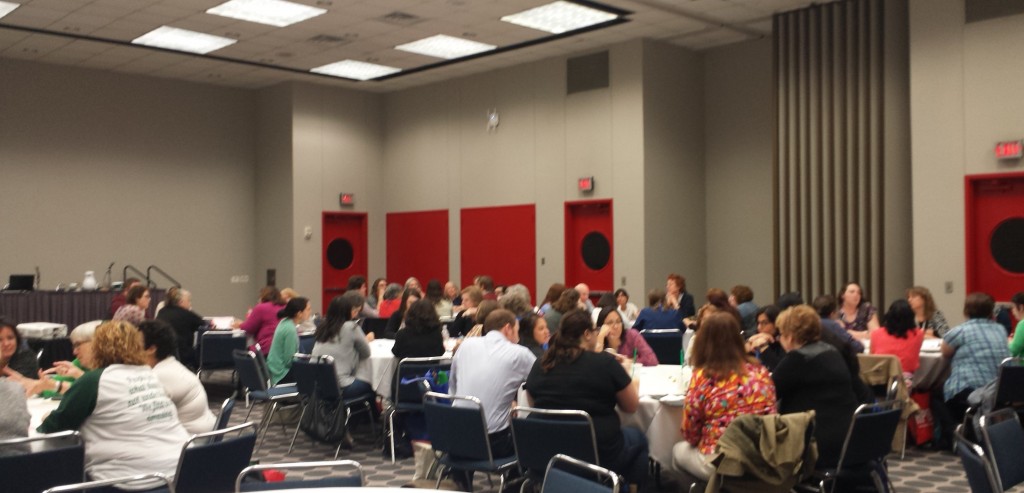May
02

Posted by nnlmneo on May 2nd, 2016
Posted in: Blog
On April 20, Cindy Olney and I facilitated a program for the Texas Library Association Annual Conference called Open Libraries! Making Your Library Welcome to All. The program was sponsored by TLA’s Diversity and Inclusion Committee and the plan for the program was for attendees to work cooperatively to discover ways to ensure that people of diverse cultures, languages, ages, religions, sexual orientations, physical abilities, and others feel welcome at the library. The committee wanted to get ideas from the wealth of TLA librarians’ experiences, so Cindy was invited to gather as much information from the attendees as possible. As co-chair of the TLA Diversity and Inclusion Committee, I co-facilitated the event.
The process used was a modified 1-2-4-All process, that you can find on the Liberating Structures website. Our primary question was “What can my library do to become more welcoming to all people?” We asked everyone in the room to brainstorm together all the different parts of a library that could be modified to make it more welcoming (e.g., reference services, facility, etc.). We wanted to be sure that everyone thought as broadly and creatively as possible.

The discussion process actually had two parts. For part one, we gave everyone two minutes to write as many ideas as they could on index cards (one idea per card). Then we asked people to take two minutes to share their ideas with a partner. They then shared their ideas with the entire table (up to 10 participants). The group then chose and wrote down the three best ideas and turned them in to the moderators. Participants were instructed to leave their index cards with their ideas piled in the middle of their tables.
Here were some of the ideas that were generated through this discussion.
As you can see, the responses were fairly non-specific. We wanted richer descriptions of modifications of programs or services. So part two of the process involved asking participants to develop more detailed plans for making their libraries more welcoming. Using a method involving dog, cat, and sea creature stickers, we moved participants randomly to new tables so that they ended up with a new group of colleagues. They then chose a partner from their new table members and, as a pair, randomly chose one idea card the piles generated in part one of the process. They worked on a plan for one idea for eight minutes. When the moderator called time, they pulled another card and worked on plans for a second idea. In the final eight minutes of the session, we asked for idea sharing by table to the entire group.
The plans in part 2 were better articulated and detailed than those we got in part one. Here are some examples of the kind of result we got from that exercise:
The whole process was completed in a 50-minute conference program session. Both myself and the other Diversity and Inclusion co-chair, Sharon Amastae from El Paso, TX, were impressed with the energy and enthusiasm that was present among attendees in the room.
The results of this data gathering event will be communicated to the TLA membership. When that project is completed, we’ll let you know here on the NEO Shop Talk blog!
Photo credit: Esther Garcia